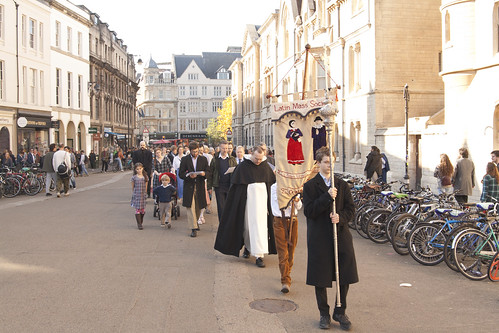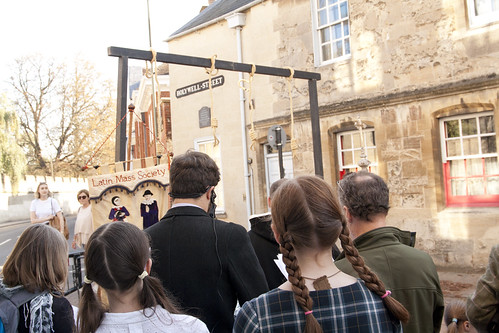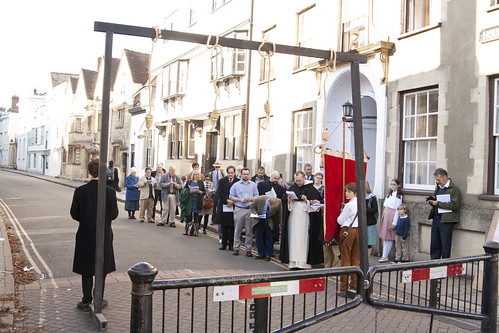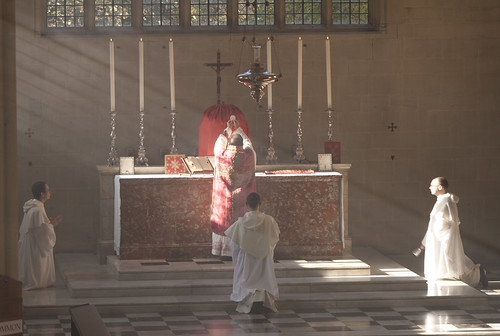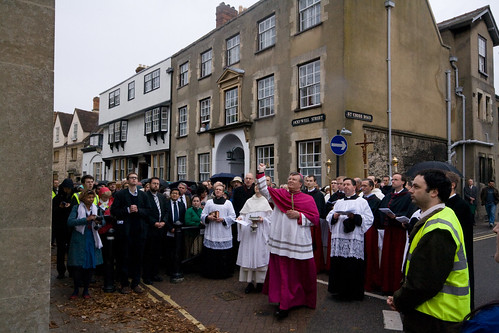Chairman's Blog
LMS Pilgrimage to Aylesford, Saturday 27th October
Our annual pilgrimage to The Friars, the home of the Carmelites.
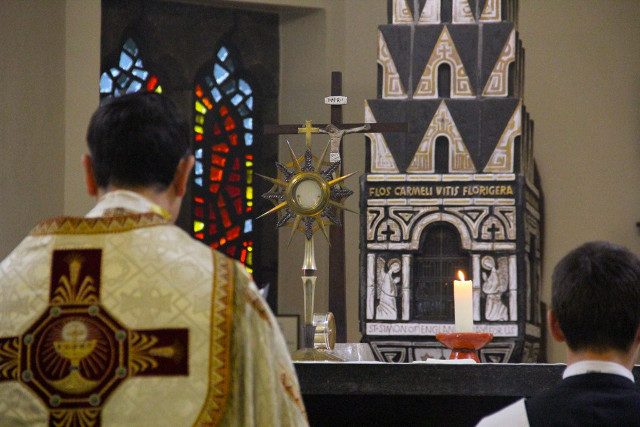
There will be a Sung Mass at 1.30pm in the Relic Chapel and the day concludes with Vespers and Benediction at 4pm.
Included in the music for the Mass (supplied by Cantus Magnus, dir. Matthew Shellhorn) will be the UK premier and world prenier of pieces by Peter Kwasniewski:
Missa a cuatro voces (K, G, S, A) de Rivera
Benedicta et venerabilis Kwasniewski UK PREMIERE
Ego mater Kwasniewski WORLD PREMIERE
Mass is at 1:30pm, at
Support the work of the LMS by becoming an 'Anniversary Supporter'.
Peter Kwasniewski's book launch in Oxford: Friday, after 6pm High Mass in SS Gregory & Augustine
All the details are below. We'll have copies of Peter's most recent three books.
On Saturday he will be at the LMS Pilgrimage to Aylesford. See here for more details.
More on Peter's latest book here.

Support the work of the LMS by becoming an 'Anniversary Supporter'.
The Pope and the Papacy
My latest on LifeSiteNews begins thus:
Read it all there.
Support the work of the LMS by becoming an 'Anniversary Supporter'.
On relics and their uses
My latest on LifeSiteNews starts thus:
Read it all there.
Support the work of the LMS by becoming an 'Anniversary Supporter'.
Making Oxford's Streets sacred again
The Latin Mass Society held its annual Pilgrimage to Oxford last Saturday.
In the 19th century a surprisingly broad cross-section of Anglicans incorporated into their thinking the notion of sacred space, leading to a new conception of what churches should be like: a conception which harked back to many old churches' Catholic past. This conception of sacred space had a natural parallel in the idea of processions. This was also the historical moment when Catholic church-building and processions began to be largely untrammelled by legal restrictions, so Catholics, less surprisingly, were doing the same things at the same time. For about a century England saw an amazing number of these, and then they suddenly almost died out in the 1970s.
The idea of sacred space implies that one place can be a better one than another for prayer not just because it is convenient and quiet but because it is holy. When our churches are consecrated there are lots of prayers and ceremonies which call down God's blessing on the building with this idea in mind. But consecration by a bishop is not the only factor: it will also particularly please God to answer our prayers if the place where we are praying is associated with the lives and sufferings of his saints. It is natural therefore to build churches at the sites of martyrdoms (the origin of St Peters and of many ancient Roman churches) and to bring relics of the saints into them. We can also go out to such sites, such as do not, yet, have churches built over them.
The site of the Catholic martyrdoms of 1589 was the Town Gallows, now occupied (approximately) by 100 Holywell Street. Four brave men, two priests and two laymen, made the ultimate witness to the Catholic Faith there, and we can witness to the Faith we share with them by going there in procession. When there the cleric with us says the Collect from the Mass of the Martyrs of England and Wales, and we sing the Church's hymn of thanksgiving, the Te Deum.
This year the sun shone and numbers were higher than they have been for quite a few years, with 70 in church and a very creditable 35 people processing through Oxford's tourists and shoppers.
Many thanks to the Prior and Community of Blackfriars for hosting us, and to Fr Lawrence Lew OP for celebrating the Mass, and to Mrs Shaw for providing lunch for pilgrims in Blackfriars' Aula.
Read more about the martyrs and this event here.
Support the work of the LMS by becoming an 'Anniversary Supporter'.
Oxford Pilgrimage 20th October 2018
This is tomorrow!
Join us for the Latin Mass Society's annual pilgrimage in honour of Oxford's Catholic martyrs, particularly those of 1589 whose site of martyrdom, where 100 Holywell Street now stands, we will be visiting.
 |
| A recent High Mass in Blackfriars in the Dominican Rite |
These pilgrimages are an occasion when we take the Faith out into the streets of Oxford. Last year we went to the site of the 1610 martyrdom of Bl George Nichols, a priest, in the Oxford Castle complex. This year we'll be going to where the town gallows used to stand, outside the portion of the city walls which are still preserved in New College gardens. The junction of Holywell Street, Manor Road, and Longwall Street was called 'Hangman's Corner' within living memory, and four beatified martyrs made their heavenly nativity there in 1589.
 |
| The procession last year, with a processional statue of Our Lady of Walsingham |
In 2008, the pilgrimage included the blessing of a newly installed plaque marking the site of these martyrdoms, by Bishop Kenny, an auxiliary bishop of the Archdiocese of Birmingham.
Support the work of the LMS by becoming an 'Anniversary Supporter'.
Newman Colloquium: a new project in Oxford
Once a month the Newman Colloquium will be presenting a 'conversation' before an audience on a matter of Catholic interest. I am delighted to be part of this project and will be the interlocutor for some of our guest speakers. The first is the excellent Michael Wee of the Anscombe Centre, and we will be talking about 'Humanae Vitae at 50'.
It will take place in the newly refurbished parish hall at SS Gregory & Augustine's, on Saturday 27th October, from 3:45pm.
Support the work of the LMS by becoming an 'Anniversary Supporter'.
Bishop Genn's fear of Traditionalists
Published on LifeSiteNews. The article begins:
Despite the fact that his diocese is desperately short of vocations, Bishop Genn of Münster recently declared: “I can decidedly say I don’t care for pre-conciliar types of clerics, and also I will not consecrate them.”
This is not an uncommon attitude, and it is not limited to Germany. I have heard stories from the English seminary, St. Cuthbert’s College at Ushaw, now closed for lack of custom, that superiors were so concerned to root out conservatively-minded candidates for the priesthood that they would watch how they held their hands during Mass. If they folded them prayerfully, this went on the record as a mark against them. Seminarians would meet to say the Rosary in each others’ rooms, in secret, for fear this subversive activity would get them into trouble, and hide theology books by Joseph Ratzinger.
This attitude seems to go beyond a simple matter of theological disagreement. Signs of conservatism are regarded as akin to signs of leprosy, and indeed, it is not uncommon to hear theological conservatism or traditionalism compared to mental illness. It should be said that this attitude is much less bad, at least in the English-speaking world, than it was a generation ago, but it has not gone away, and it is striking that a German bishop should embrace it so openly.
While I lack any special information about Bishop Genn, I think I can shed light on the phenomenon as a whole. The language commonly used about young conservatives and traditionalists – “rigid,” “conformists,” “authoritarian,” “clericalist” – are related to trends in psychiatry which were influential in the decades after the Second World War. Here is a typical description of the “authoritarian personality” published in 1970 (Peter Kelvin, The Bases of Social Behaviour):
Welcome Princess Alexandra of Hanover to the Roman Catholic Church
Published on LifeSiteNews: the article begins:
Every now and then a closer or more distant blood relation of Britain’s Queen becomes a Catholic, and in doing so is removed from the "line of succession." This is one of the last legal remnants of a system of anti-Catholic discrimination which once saw Catholics banned from living in London and becoming army officers, long after the bloody persecution ended. It means that however unlikely it might have been in any case, swimming the Tiber washes off the theoretical possibility that you could become King or Queen of the United Kingdom of Great Britain and Northern Ireland. Recently, it was the turn of Princess Alexandra of Hanover, who at 19 has adopted the Catholic religion of her mother.
Princess Alexandra is rather more closely related to the houses of Hanover and of Monaco than to Britain’s House of Windsor, and she probably gave this aspect of her conversion little thought. Somewhat closer to the British throne was Lord Nicholas Windsor, who was received into the Church in 2001; he gave an interview to LifeSiteNews in 2011.
Catholics are excluded from the line of succession by the Act of Settlement of 1701; Britain’s monarch is, after all, the Supreme Governor of the Church of England. Catholics are the Act’s targets, because it was passed in the aftermath of the English Revolution of 1688 (called by its supporters the “Glorious” Revolution), which saw the overthrow of the Catholic King James II. The greater friendliness of his brother and predecessor King Charles II to Catholicism and to the leading Catholic power of the time, France, led to the anti-Catholic moral panic of the fraudulent Titus Oates plot. When the Catholic James II had a son, and so looked set to establish a Catholic monarchy for the foreseeable future, a group of powerful Protestant nobles staged a coup.
Read it all on LifeSiteNews
Support the work of the LMS by becoming an 'Anniversary Supporter'.
The cultural front-line in Oxford
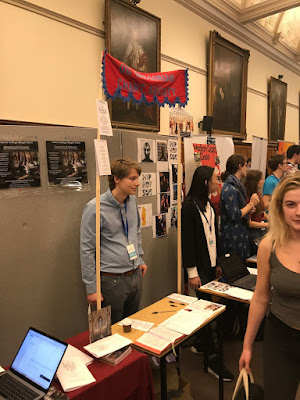 I have a piece on the Catholic Herald website. It begins:
I have a piece on the Catholic Herald website. It begins:
Recently I spent many hours on the front line of the new evangelisation. In a formerly Christian country, Britain, where the cultural achievements of the Church are still remembered and appreciated, at least by some, I was working on the via pulchritudinis: the “way of beauty”.
As Pope St John Paul II expressed it in 2003 (Ecclesia in Europa 60):
“Nor should we overlook the positive contribution made by the wise use of the cultural treasures of the Church. … artistic beauty, … a sort of echo of the Spirit of God, is a symbol pointing to the mystery, an invitation to seek out the face of God made visible in Jesus of Nazareth.”
Where was I? At Oxford University’s Freshers’ Fair, as I am every year, recruiting singers for a Gregorian Chant schola named after an Oxford student who died for the Faith, Blessed Thomas Abel.
Support the work of the LMS by becoming an 'Anniversary Supporter'.

